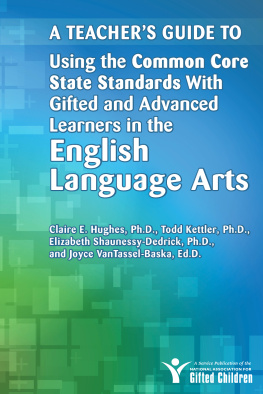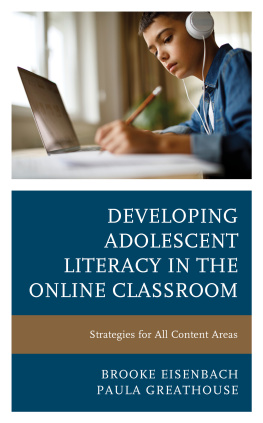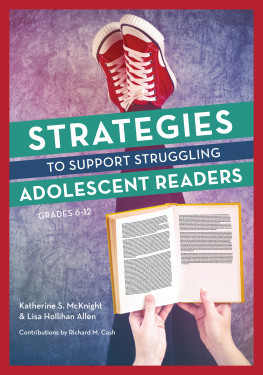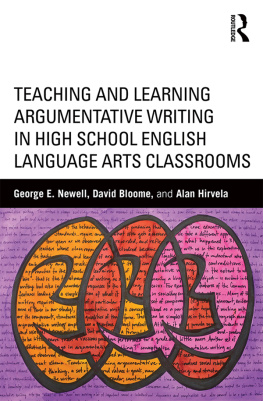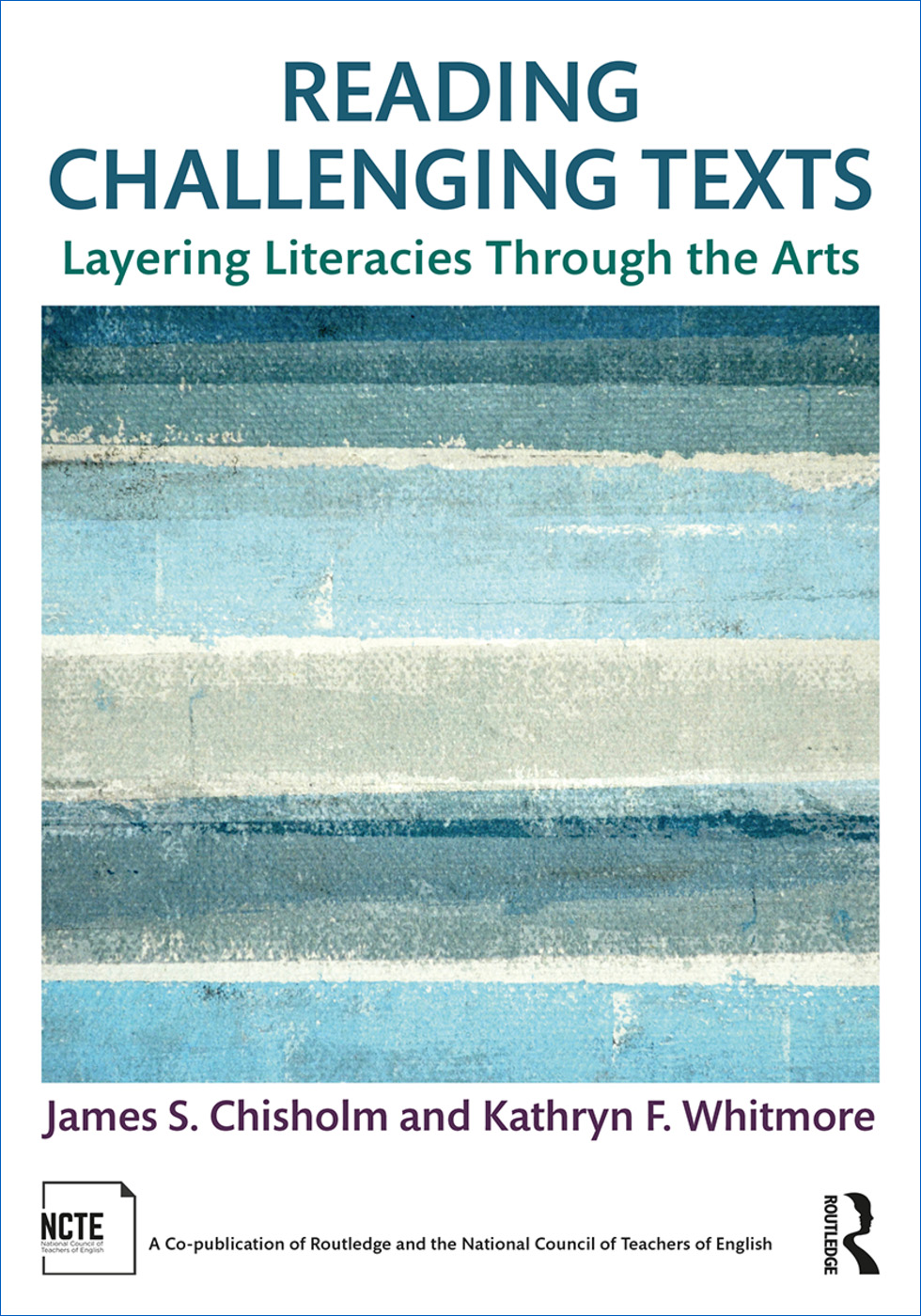Contents
Reading Challenging Texts
Bringing together arts-integrated approaches, literacy learning, and classroom-based research, this book explores ways upper elementary, middle, and high school teachers can engage their students physically, cognitively, and emotionally in deep reading of challenging texts. With a focus on teaching about the Holocaust and Anne Franks diarypart of the U.S. middle school literary canonthe authors present the concept of layering literacies as an essential means for conceptualizing how seeing the text, being the text, and feeling the text invite adolescents to learn about difficult and uncomfortable literature and subjects in relation to their contemporary lives. Offering a timely perspective on arts education advocacy, Chisholm and Whitmore demonstrate the vital need to teach through different modalities in order to strengthen students connections to literature, their schools, and communities. Accessible strategies are illustrated and resources are recommended for teachers to draw on as they design arts-based instruction for their students learning with challenging texts.
James S. Chisholm is Associate Professor of English Education in the College of Education and Human Development at the University of Louisville, USA.
Kathryn F. Whitmore holds the Ashland/Nystrand Chair of Early Childhood Research and is Director of the Early Childhood Research Center at the University of Louisville, USA.
Reading Challenging Texts
Layering Literacies Through the Arts
James S. Chisholm
and
Kathryn F. Whitmore
Co-Published by Routledge and the National Council of Teachers of English

First published 2018
by Routledge
711 Third Avenue, New York, NY 10017
and by Routledge
2 Park Square, Milton Park, Abingdon, Oxon, OX14 4RN
Routledge is an imprint of the Taylor & Francis Group, an informa business
2018 Taylor & Francis
The right of James S. Chisholm and Kathryn F. Whitmore to be identified as authors of this work has been asserted by them in accordance with sections 77 and 78 of the Copyright, Designs and Patents Act 1988.
All rights reserved. No part of this book may be reprinted or reproduced or utilised in any form or by any electronic, mechanical, or other means, now known or hereafter invented, including photocopying and recording, or in any information storage or retrieval system, without permission in writing from the publishers.
Trademark notice: Product or corporate names may be trademarks or registered trademarks, and are used only for identification and explanation without intent to infringe.
Library of Congress Cataloging in Publication Data
A catalog record for this book has been requested
ISBN: 978-1-138-05863-7 (hbk)
ISBN: 978-1-138-05864-4 (pbk)
ISBN: 978-1-315-16406-9 (ebk)
NCTE stock number: 58644
Typeset in Minion Pro
by codeMantra
Dedicated to teachers who are brave, and becoming brave, about sanctioning challenging texts and topics in their classrooms
Contents
Jeffrey Jamner
Eileen Landay
Renita Schmidt
Renita Schmidt
Renita Schmidt, James S. Chisholm, and Kathryn F. Whitmore
The scene was set. Two hundred classmates and teachers sat waiting in the audience. In the front row was Fred Gross, a Holocaust survivor who had inspired the students with his familys survival stories just weeks before. Two eighth-grade students, who later described how apprehensive they were about performing, and whose teacher acknowledged their typical reluctance at school, walked to the front edge of the stage and each read a personal letter to Mr. Gross. Unexpectedly, Mr. Gross rushed to the stage with tears in his eyes to hug both girls. In this moment, these students discovered that although they knew Mr. Grosss words and story had affected them deeply, their words had the power to move him, too.
This was part of a culminating performance of a study that integrated the arts with Holocaust history and literature at one of four schools in a program called the Anne Frank: Bearing Witness Project, which involved a partnership with The Kentucky Center for the Performing Arts, Brown Universitys ArtsLiteracy Project, and the University of Louisville.
At another school four miles away, a different transformation took place. An eighth-grade student participated with her classmates in the arts-based Anne Frank study, but she had something more personal at stake. She was one of the only Jewish students in her class, and previously she downplayed her Jewish identity at school. During the project, she asked if she could bring her Rabbi to talk with the class and she began to wear a necklace with a Star of David to school every day.
These are just two of the many powerful learning experiences that took place in the Anne Frank: Bearing Witness Project, which James and Kathy expertly evaluated, researched, and wrote about in this important book.
As an arts education director for a leading performing arts center, I am frequently asked to demonstrate the value of teaching the arts and integrating the arts across subjects such as social studies and English. Education and funding communities increasingly request evidence in numerical form. How can you ascribe a number to quantify the impact on two 14-year-olds discovering that their voices as writers have the power to move others to tears? How can you measure the importance of a middle school student finding the courage and resolve to show who she really is in a school environment for the first time? I find that the most important and nuanced evidence of growth does not always lend itself to that kind of measurement.
Yet it was important for us to report to the Jewish Heritage Fund for Excellence, our funder, the ways in which their investment in this project had achieved its goals. James and Kathy went far beyond confirming that students were engaging and emotionally investing in their learning, responding with empathy to Anne Franks diary, and making personal connections between this difficult history and their world today. Through their fastidious and innovative research, they discovered ways to explain why and how this robust learning was taking place. And herein lies the significance of this book: they provide a path for understanding how the arts play a role in multilayered literacy learning experiences that result in increased levels of engagement, empathy, emotional understandings, and even empowerment to action.
Their research is solidly grounded in multimodal and sociocultural theories, in which they demonstrate how students make meaning through multiple literacies of seeing, being, and feeling the text (visual, embodied, and emotional literacies, respectively). This is true for both processing new understandings and for communicating and expressing those understandings through various modalities.
At the heart of our work is a process developed at Brown Universitys ArtsLiteracy Project called The Performance Cycle, which is especially well-suited to tackling difficult and uncomfortable subject matter, and what James and Kathy call challenging texts, because it provides powerful ways to develop a classroom culture in which students support each other as they share a deeper level of vulnerability and authenticity than they are usually asked for in school. Trust must be established. As The Performance Cycle continues, students become partners in constructing the curriculum, and they become more invested as learners.


